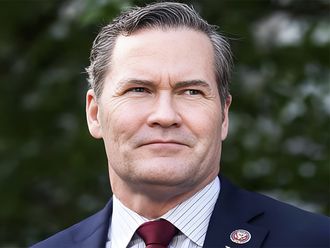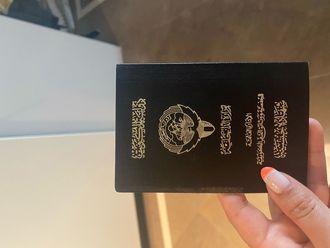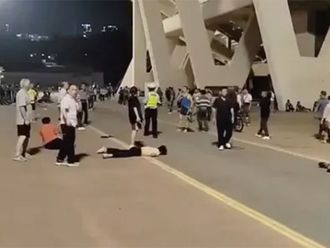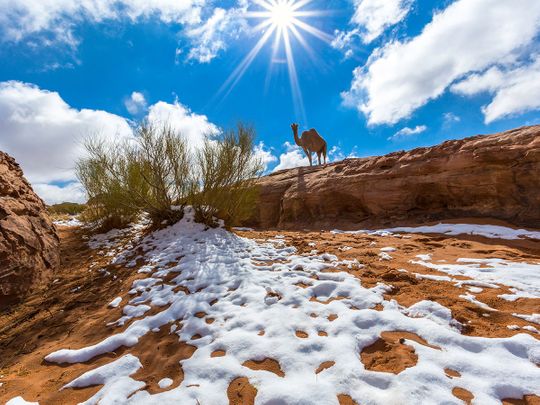
Highlights
- For the first time ever, tourist visas made available via Saudi embassies and consulates across the world
- Citizens of 49 countries will be able to get e-visa online and visa on arrival
Riyadh: Saudi Arabia opened its doors to the world on Friday after it announced that tourist visas will be available to citizens from 49 countries.
For the first time, tourists can now apply for a visa through Saudi embassies and consulates across the world
Marking a milestone in Saudi Arabia’s history, Ahmed Al Khateeb, Chairman of the Saudi Commission for Tourism and Heritage (SCTH), announced the launch of the tourist visa for the Kingdom of Saudi Arabia at an event in Ad-Diriyah, a Unesco World Heritage Site in Riyadh.
Citizens from 49 countries will also be able to apply for an e-visa or receive a visa on arrival into Saudi Arabia. Log into the online portal at saudiarabiavisa.com in order to get your e-visa online.
The Saudi Arabia eVisa application only takes a few minutes to complete online, so there will be no need to go to an embassy or consulate.
Saudi Visa Registration Process
According to the Saudi Arabia Visa portal, to obtain your Saudi Arabia eVisa you just need to follow a few simple steps by completing the online application:
Complete the Saudi Arabia application form
Pay the eVisa fee using a credit or debit card
Receive the Saudi Arabia Online Visa by email
Candidates must have a valid passport from one of the eligible countries in order to successfully complete the application. The Saudi Arabia eVisa is available for citizens from eligible countries to visit the Saudi Arabia for tourism purposes.
The following 49 countries are eligible to apply for e-visas and visas on arrival:
- USA
- Canada
- Kazakhstan
- Singapore
- Brunei
- New Zealand
- South Korea
- Japan
- Spain
- Belgium
- Malaysia
- Austria
- Cyprus
- UK
- Croatia
- Estonia
- Andorra
- Denmark
- Germany
- Bulgaria
- France
- Hungary
- Czech Republic
- Holland
- Italy
- Finland
- Ireland
- Lithuania
- Greece
- Liechtenstein
- Monaco
- Iceland
- Malta
- Poland
- Latvia
- Norway
- Russia
- Luxembourg
- Romania
- Slovenia
- Montenegro
- Slovakia
- Switzerland
- Portugal
- Sweden
- Australia
- San Marino
- Ukraine
- China, including Hong Kong, Macau and Taiwan
The tourist visa allows for a stay of up to 3 months per entry, with visitors able to spend up to 90 days a year in Saudi Arabia. The visa is valid for one year with multiple entries.
The cost of applying for an e-visa or a visa on arrival is 440 riyals (around $117) plus VAT.
Saudi Arabia intends to extend the e-visa scheme to other countries in due course.
Sector development strategy
A robust sector development strategy underpins the launch of the new tourist visa.
In the first phase of the program, from 2019 to 2022, the focus will be on attracting first-time visitors to “discover Saudi”.
The second phase of the program, from 2022 onwards, will focus on enticing visitors to “experience Saudi”.
As part of phase one, over 20 new tourist sites will be developed, dramatically expanding choice and opportunity for visitors to discover the country’s hidden treasures.
As part of phase two, the full development of Saudi’s giga projects will come on stream, including NEOM, Amaala, the Red Sea Project, Al Ula, Qiddiyah and Ad Diriyah.
Speaking at the launch of the new tourism visa, Al Khateeb said: “For the first time, we are opening our country to tourists from all over the world. To those thinking of visiting Saudi Arabia, you won’t find a warmer welcome anywhere in the world. And you won’t find a people prouder to share the riches of their land with you.
“Make no mistake, this is Vision 2030 in action. Under the leadership of his Majesty the King and His Royal Highness the Crown Prince, we are delivering; supercharging a non-oil sector that will drive growth and diversify our economy for decades to come," said Al Khateeb.
“Saudi Arabia is opening. We are opening our economy. We are opening our society. Now we open our home and open our hearts to guests from around the world. Come, visit Saudi. And let us welcome you to Arabia.”
As Saudi Arabia opens to tourists from across the world, the General Investment Authority (SAGIA) and the Saudi Commission for Tourism and National Heritage (SCTH) announced a number of memoranda of understanding (MOUs) and agreements with regional and international investors totaling around 100 billion riyals.
Signed at a ceremony held at the Ritz-Carlton hotel in Riyadh, the agreements reflect the enormous potential Saudi Arabia's growing tourism sector offers to investors across the Kingdom and around the world.
Ebrahim Al Omar, Governor of SAGIA, announced: “In Saudi Arabia, the market fundamentals are in place for a vibrant tourism industry, and we believe that the private sector will play a crucial role in unlocking this potential. At SAGIA, our role is to empower and enable domestic and international investors by identifying and developing new opportunities, fostering partnerships and shaping regulatory reforms. Signing these agreements today represents a milestone for the Kingdom of Saudi Arabia as we continue charting a path to a new diversified economy.”
Opening Saudi Arabia to tourism is a key milestone in the implementation of Vision 2030, which seeks to diversify the country’s economy and reduce its dependence on oil.
Saudi Arabia expects to increase international and domestic visits to 100 million a year by 2030, attracting significant foreign and domestic investment and creating a million jobs.
By 2030, the aim is for tourism to contribute up to 10 per cent towards Saudi Arabia’s GDP, compared to just 3 per cent today.
These agreements demonstrate the private sector’s confidence in the potential of the country’s tourism sector, and its prospects for future growth.
Ahmed Al Khateeb, Chairman of SCTH, also explained: “These exciting and wide-ranging agreements are only the beginning of the investment opportunities that will arise within Saudi Arabia, the fastest growing tourism sector on earth. We anticipate more businesses from around the world will establish operations within the Kingdom, as its unique attractions, culture and natural beauty become more widely appreciated.”
Agreements and MOUs signed by SAGIA include:
Triple 5: An MoU and other investment opportunities worth 37.5 billion riyals, with Triple 5 planning to develop a series of mixed-use tourism, hospitality and entertainment destinations across the Kingdom.
Majid Al Futtaim: An MOU worth 20 billion riyals for a mixed-use shopping and entertainment destination which will create 12,000 jobs and feature the region’s largest indoor ski slope and snow park.
OYO Rooms: An MoU worth 4 billion riyals, as OYO announces its intent to purchase 10 or more upper-budget level and luxury hotel properties across the Saudi Arabia.
Nenking Group / Ajlan Brothers: A joint-venture, worth 1.5 billion riyals, to build a landmark lifestyle destination in Riyadh to serve as an anchor point for the Kingdom’s entertainment industry.
FTG Development: An MoU to build a hotel, waterpark and retail development in Qiddiya; a 1,500 room hotel in NEOM; and a hotel situated between Jeddah and Makkah.
Kerten Hospitality: An investment license with a value of 270 million riyals, with the company planning to develop a portfolio of mixed-use projects across the Kingdom.
Tetrapylon: An investment license worth 2.5 million riyals, with the company planning to coordinate with leading tour operators across North America, Europe and Asia to profile Saudi Arabia as a must visit global tourist destination.
Agreements and MOUs facilitated by SCTH include:
Al Khozama: Two MoUs concerning the Mayasem Project and the Harbour Project in Jeddah, along with other investment plans. These cover real estate, food and beverage investments, as well as facility management services and business development projects.
Diriyah Gate Development Authority: Two MoUs; the first with Greg Norman Golf Design to establish a 27-hole golf course at Wadi Safar. The second agreement is with AMAN Resorts to build an exclusive 40 room hotel in Al Bujairi, overlooking the Wadi Hanifah Valley and At-Turaif Uesco World Heritage Site.
Saudia: The airline has agreed four MoUs, with the first agreement involving the launch of the first commercial flights to NEOM. The other MoUs cover the creation of Saudi Arabia's first destination management company (with the regulatory support of Saudi Commission for Tourism and National Heritage); A joint initiative between Saudia and SAUDIA and The Red Sea Development Company to promote the Red Sea Project as a luxury global destination to drive inbound tourism; and an agreement with the Royal Commission for Al Ula.
In addition, organisations have made investment commitments collectively valued at 36.25 billion riyals, including Al Shaya Group, Shomoul, Radisson, Alrajhi Investment and Seera Group.
These investments come alongside a broad series of economic reforms which are enabling rapid growth in foreign investment in Saudi Arabia. The total number of foreign investor licenses issued in the first half of 2019 was more than double the number issued the same period a year before.
What to see
Riyadh

The thriving city of Riyadh, situated high upon a desert plateau, is Saudi Arabia’s political and business capital, as well as one of the most affluent cities in the region. What was once a small desert oasis in the heart of the Arab world, has now become a major metropolis booming with industry, high-end hotels, and vast upmarket shopping centres lined with designer boutiques and popular restaurants.
Ancient mosques lie alongside state-of-the-art skyscrapers and date palms line the avenues. You can spend your time either visiting the National Museum and learn about the city’s rich Arabian heritage; whizz up a high-speed elevator to the top of the Kingdom Tower Sky Bridge where you can see breath-taking views of the city and beyond; or ride a camel into the desert where you can interact with friendly nomadic Bedouins.
Things to do
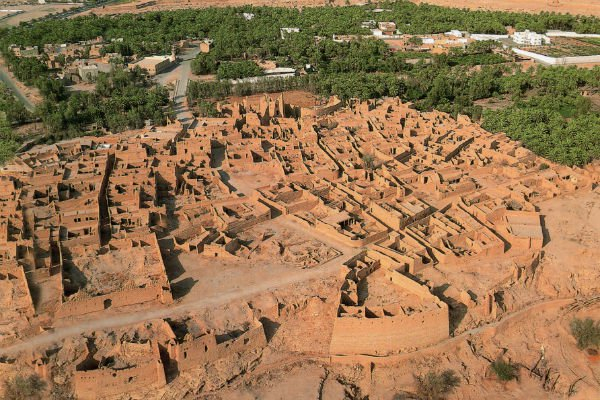
National Museum of Saudi Arabia: A major national museum in Saudi Arabia. Established in 1999, it is part of the King Abdul Aziz Historical Centre in Riyadh.
Ad Diriyah: Known for its traditional mud-brick architecture, Ad Diriyah is home to a pedestrian-friendly maze of winding alleyways with cafes and craft shops. Cultural sites include Diriyah Museum, a former palace with exhibits on Saudi history, and the restored Al Zawihra Mosque.
Edge of the World: Formally called Jabal Tuwaiq, a remarkable and dramatic escarpment about 90 minutes from Riyadh. Enjoy the breath-taking scenery from the top of the 300-metre-high cliffs overlooking the surrounding plain.
Riyadh souks
- Taibah Market: This market carries a traditional flare and is one of the oldest and biggest souks in the city. From spices to fragrances, household items and furniture, thobes and abayas, toys and trinkets.
- Gold Souk Shams Ad Din As Salihi: Gold traditional market
- Al Thaimiri Street: For handicrafts and local flare, head to souk Al Thumairi. These shops have everything from carpets and coffee pots to silver daggers and silver jewellery.
What to see
Al Ula
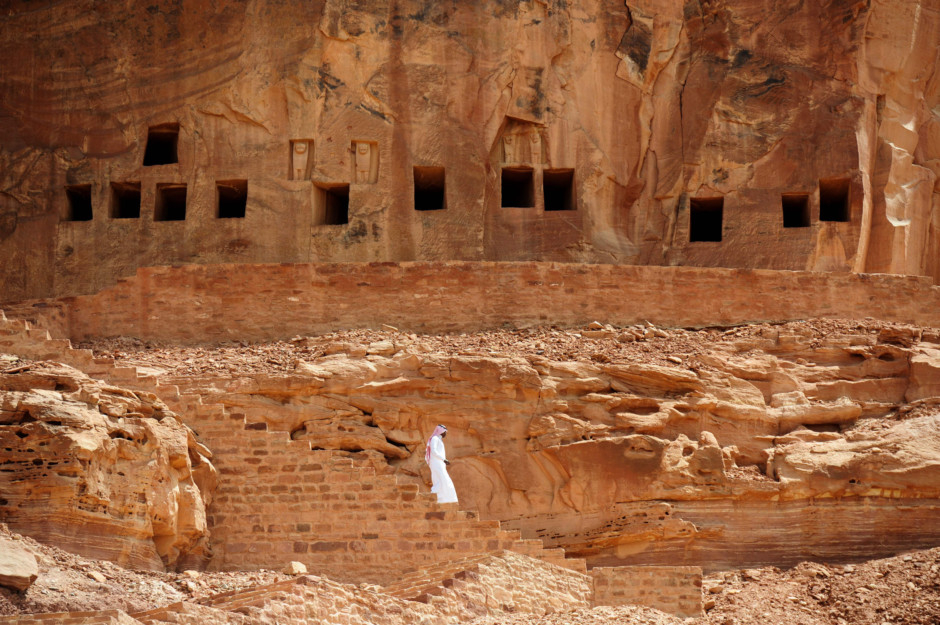
Situated about 300 km northeast of Medina and about 110 km southwest of Tayma, in northwest Saudi Arabia, Al Ula is a city rich in ancient treasures. Numerous sites from centuries ago are scattered throughout the area. Madain Saleh – one of five Unesco-listed World Heritage Site’s in Saudi Arabia – is known as the second largest Nabatean capital and is home to tombs decorated with exquisite etchings, inscribed into the stone.
Another must-see is the atmospheric historic village at Al Deerah, which displays a vast network of stone-house ruins that were inhabited eight centuries ago. There are also numerous museums to explore, which offer insight into the abundant heritage of the area. Geologists will enjoy visiting Elephant Rock, an enormous elephant-shaped formation which creates astonishing shapes and colours against the setting desert sun.
Things to do
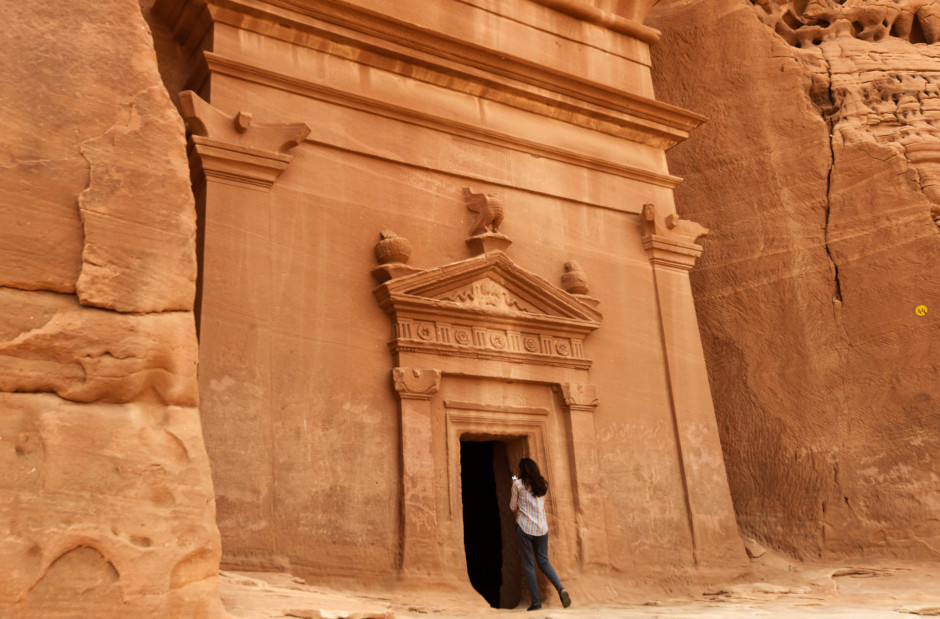
Madain Saleh: Often referred to as the second Petra, Madain Saleh, for many, is on par with its famous cousin across the border in Jordan. Both were major trading cities along the ancient Nabataean trade routes, as confirmed by recent excavations that revealed the foundations of houses and a market area for traders and caravans. However, it's the 131 enigmatic tombs, which combine elements of Graeco-Roman architecture with Nabataean and Babylonian imagery that grab the limelight.
Al Ula: Enjoy wandering among the beautiful mud ruins where people (the ancestors of the current residents of Al Ula) lived for centuries. Visit Al Ula Fort, it is worth trying to locate the tantura (sundial) and old mosque. The ruins are dissected by the highway; those on the upper west side have been renovated considerably, while the lower east side is wonderfully raw.
What to see
Tabuk
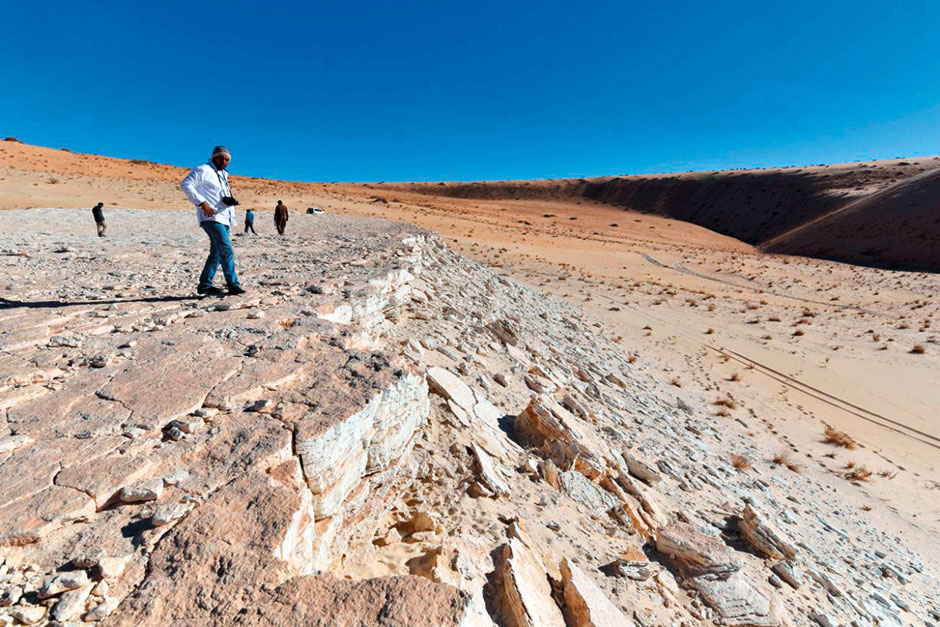
Situated in northwestern Saudi Arabia, Tabuk serves as the capital of the Tabuk Region. Set close to the Jordanian-Saudi Arabia border, this bustling city is a growing tourist destination. Hajj pilgrims once made use of this conveniently set city while trekking to Makkah. Owing to its rich pilgrim history, it boasts an eclectic mix of Egyptian and Ottoman influences in its people and its food. Visitors can browse the bustling and colourful souq, discover pristine white-sand beaches to the west and visit Tabuk Castle, an ancient castle that has been turned into a museum.
The region boasts a large number of monuments, in addition to historical and natural landmarks including Taymaa; known for its fresh water, fertile soil and moderate climate. Its geographical location has always been important and Taymaa has therefore been occupied by settlers through the ages because of the trade links between the South Arabian Peninsula and Syria, Egypt, Persia and Turkey.
Things to do
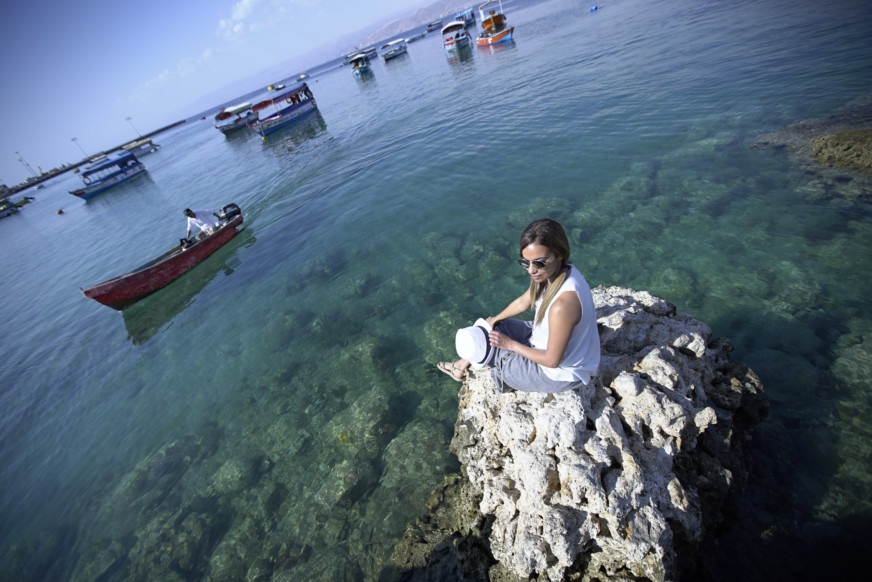
Wadi Tayeb Esm: Tayeb Al Ism is one of the magical natural wonders of Saudi Arabia that takes visitors by surprise. This incredible natural feature of Tabuk Province is located on the Gulf of Aqaba, just 15 km north of the coastal town of Maqna.
When approaching by the road that runs along the turquoise waters and white beaches of the Gulf of Aqaba, what strikes people first is the imposing shape of the 600-metre-high granite massif of the Tayeb Al Ism.
Haql: This beach and shipwreck is located 55 km south from Haql city in Tabuk Province. The place is in natural state, which means there are no hotels, restaurants or facilities nearby. Just a half-sunken ship and a beach all to yourself and the mountains provide a stunning backdrop in the background of this beach scene. The mysterious sunken ship makes the landscape at this beach look almost other-worldly. On the other side of the Gulf of Aqaba you can see the mountains of Sinai in the distance.
What to see
Jeddah
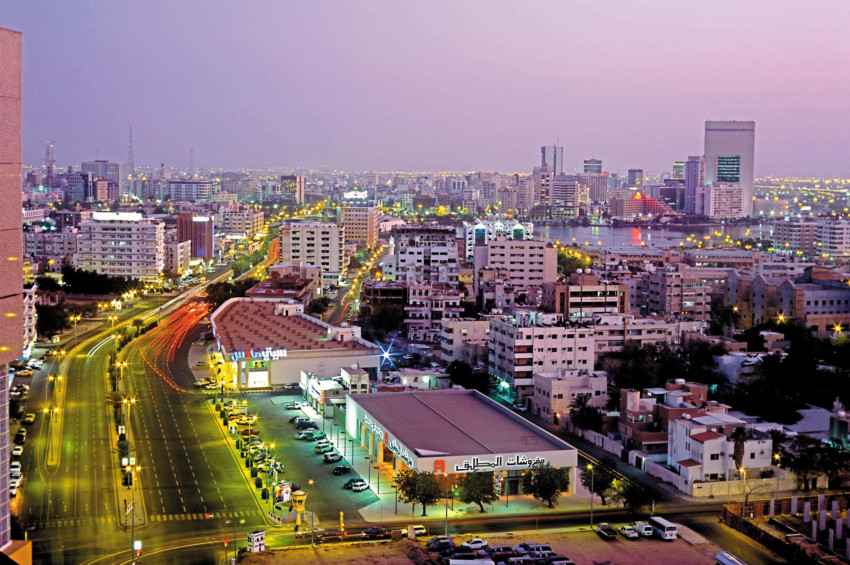
Jeddah lies on the coast of the Red Sea in western Saudi Arabia and is the Kingdom’s second largest city, as well as a major commercial centre. Jeddah serves as the main entry point, either by air or sea, for pilgrims making the journey to Mecca and Medina. The city is also known for its art scene, vast, shopping districts, restaurants and cafes as well as the Jeddah Corniche.
This waterfront area is lined with world-class hotels, beaches and upmarket resorts. The main tourist attraction is the old town, known as Al Balad, where visitors can explore a maze of ancient buildings and traditional souks, as well as the teetering, multi-story houses made from coral, for which the city is famous.
Another major highlight is the spectacular diving with remarkable visibility and virtually untouched coral reefs playing host to a profusion of colourful aquatic life.
Things to do
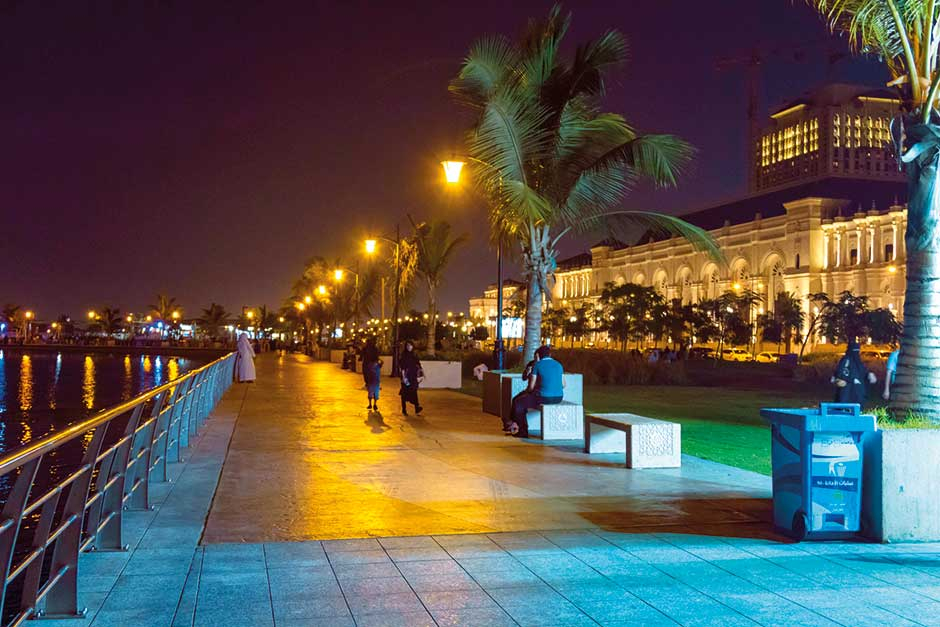
Al Balad and Naseef House: Balad can literally be translated as "The Town” and is the historic centre of the City of Jeddah. Al Balad was founded in the 7th century and historically served as the centre of Jeddah. Al Balad's defensive walls were torn down in the 1940's. One of Jeddah’s best-restored old coral houses, Naseef House belonged to one of Jeddah’s most powerful trading families and was later a royal residency for King Abdul Aziz.
Look out for the ramps installed by the king to allow his camel-mounted messengers to ride all the way to the upper terrace, and the huge tree left of the door. As recently as 1920, this was the only tree in the whole of Jeddah.
Jeddah Corniche: The Corniche is the 30 km coastal resort area in the city of Jeddah. Located along the Red Sea, the corniche features a coastal road, recreation areas, pavilions and large-scale civic sculptures — as well as King Fahd's Fountain, the highest fountain in the world. Also located here is the Al Rahmah Mosque, which was formerly known as the Fatima Mosque.
KAEC: A 90-minute drive from the corniche is the King Abdullah Economic City (KAEC) mega-project, part of a massive initiative to position Saudi among the world’s top investment destinations. The city consists of six areas: industrial zone, sea port, residential areas, sea resort, educational zone, and a central business district.
Vision 2030
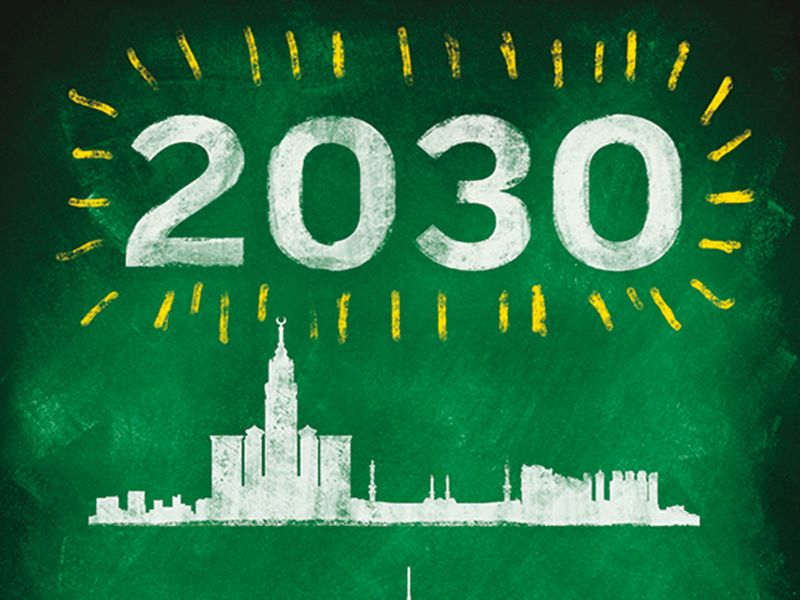
The introduction of tourist visas to the kingdom and the development and expansion of real estate projects are all part of Saudi Arabia’s Vision 2030, which focuses on three main themes: a vibrant society, a thriving economy and an ambitious nation.
Announced in 2016 by Saudi Arabia’s Crown Prince Mohammad Bin Salman, the Vision 2030 reform plan is a package of economic and social policies designed to free the kingdom from dependence on oil exports.
In the manifesto, Prince Salman explained that all success stories start with a vision, and that successful visions are based on strong pillars.
“We are determined to reinforce and diversify the capabilities of our economy, turning our key strengths into enabling tools for a fully diversified future. We will expand the variety of digital services to reduce delays and cut tedious bureaucracy. We will immediately adopt wide-ranging transparency and accountability reforms and, through the body set up to measure the performance of government agencies, hold them accountable for any shortcomings. We will be transparent and open about our failures as well as our successes, and will welcome ideas on how to improve.

We will work tirelessly from today to build a better tomorrow for you, your children, and your children’s children
"All this comes from the directive of the Custodian of the Two Holy Mosques, King Salman bin Abdul Aziz Al Saud, may Allah protect him, who ordered us to plan for a future that fulfills your ambitions and your aspirations. In line with his instructions, we will work tirelessly from today to build a better tomorrow for you, your children, and your children’s children.”
1. Vibrant society
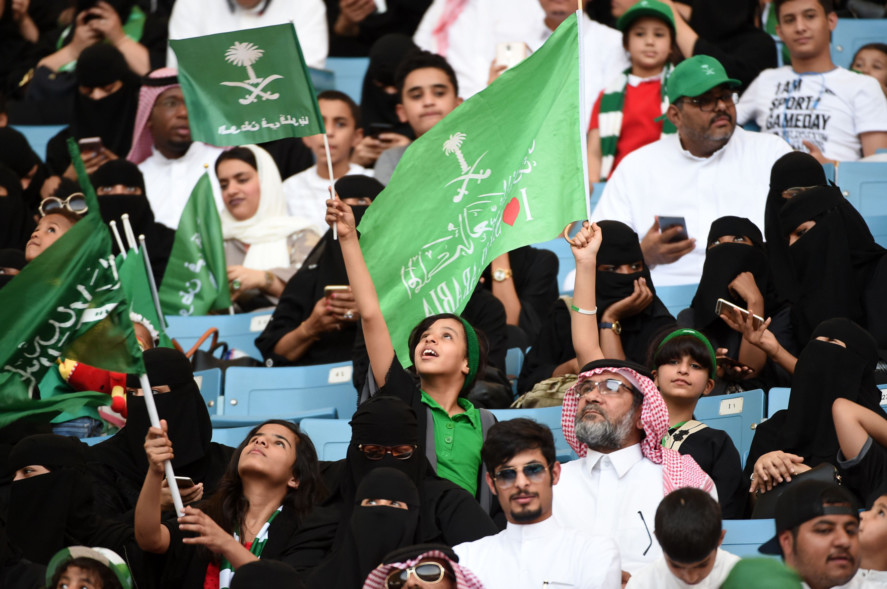
A vibrant society, according to Vision 2030, is one with strong roots, fulfilling lives and strong foundations.
Strong roots
The strong roots in society will be enriched by focusing efforts to serve Umrah visitors, which include modernizing and increasing the capacities of airports, as well as the launch of the Makkah Metro project to complement the railroad and train projects that will serve visitors to the Holy Mosques. By 2030, the goal of the Kingdom is to increase the capacity of Umrah visitors from 8 million to 30 million every year, and to more than double the number of Saudi heritage sites registered with UNESCO.
Fulfilling lives
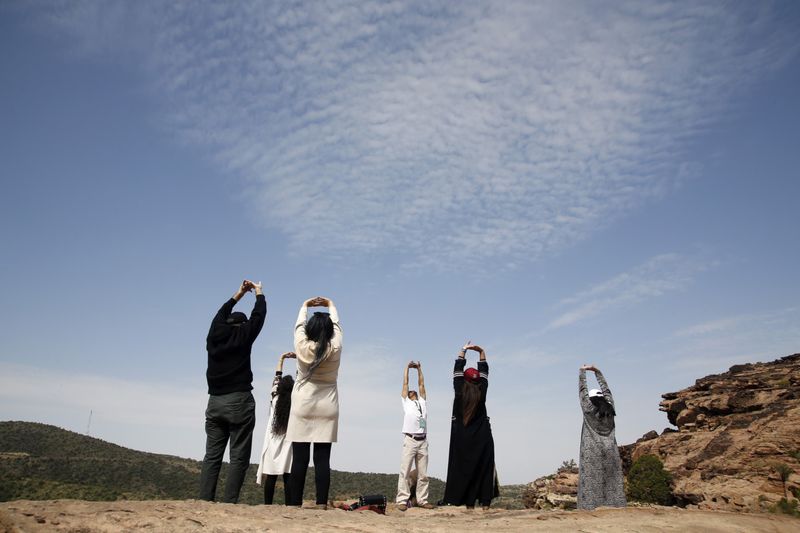
The strategy to fulfil the lives of people in Saudi Arabia will be carried out by promoting culture and entertainment, living healthy through practising sports and athletic activities, the development of cities and achieving environmental sustainability. By 2030, Saudi Arabia aims to have three cities recognized in the top-ranked 100 cities in the world, to increase household spending on cultural and entertainment activities inside the Kingdom from the current level of 2.9 per cent to 6 per cent, and to increase the ratio of individuals exercising at least once a week from 13 per cent of the population to 40 per cent.
Strong foundations
The ability to build a strong and productive society will be carried out by promoting and reinvigorating social development that focuses on families, which play a key building block in society. The 2030 goal is to raise Saudi’s position from 26 to 10 in the Social Capital index and to increase the average life expectancy from 74 years to 80 years.
2. A thriving economy
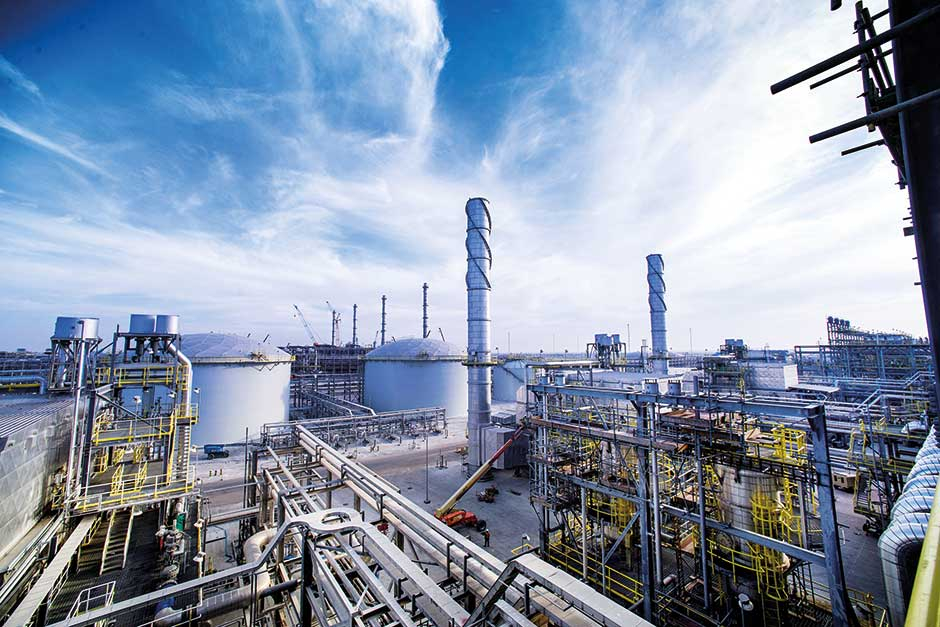
The skills and competencies of Saudi children are one of the most important assets of the country, and to make the most of their potential, Vision 2030 aims to create a culture that rewards determination, provides opportunities for all and helps everyone acquire the necessary skills to achieve their personal goals.
Rewarding opportunities
The economy will provide opportunities for everyone – men and women, young and old – so they may contribute to the best of their abilities. By 2030, the Kingdom intends to lower the rate of unemployment from 11.6 per cent to 7 per cent, increase SMEs’ (small and medium-sized enterprises) contribution to GDP from 20 per cent to 35 per cent, increase women’s participation in the workforce from 22 per cent to 30 per cent.
Investing for the long-term
Diversifying the economy, according to the leader’s vision, is vital for the country’s sustainability as they shift away from the oil and gas sectors and move into new ones. In the tourism and leisure sectors, the Saudi government intends to create attractions that meet the highest standards and improve the issuance of visas to visitors, while preparing and developing the country’s historical and heritage sites in tandem. Investments will increase in the field of digital technology, while continuing to explore the Kingdom’s mineral resources, specifically in mining.
Open for business
To become one of the largest economies in the world, Saudi intends to improve its business environment through creating special zones and deregulating the energy market to make it more competitive.
Leveraging its Unique Position
Saudi Arabia is smack in the middle of important international trade routes between the continents of Asia, Europe and Africa. The country, therefore, aims to maximise the benefits of its strategic geographical position and form new strategic partnerships to grow its economy and help Saudi-based companies increase exports.
3. An ambitious nation
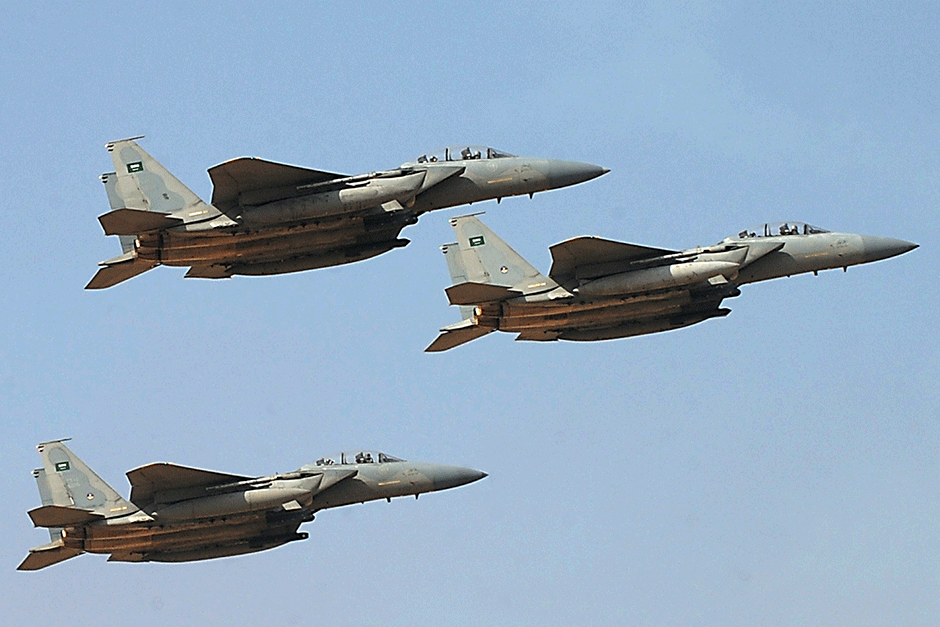
By 2030, Saudi Arabia’s goal is to increase household savings from 6 per cent to 10 per cent of total household income, raise the non-profit sector’s contribution to GDP from less than 1 per cent to 5 per cent, and rally one million volunteers per year as compared to 11,000 now.
Nurturing human talent will be one of the main objectives on the agenda and through the implementation of the Human Capital Program, the Saudi government will be able to measure, assess and analyse the efficiency of its civil service, in addition to supporting government agencies with staff, studies, consultations, and strategic partnerships.




